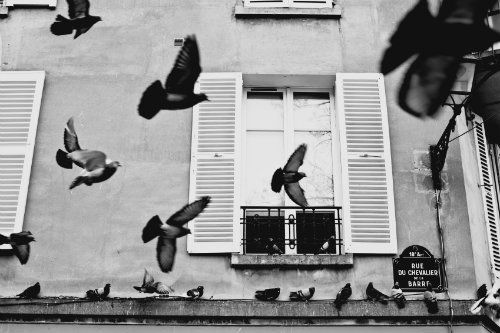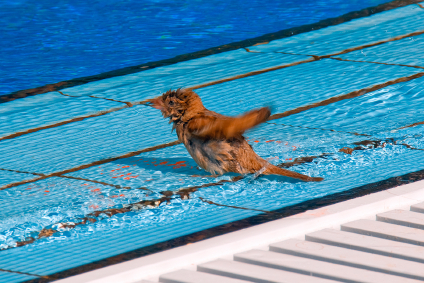
If your school is like most, it has open courtyards, outdoor eating areas and overflowing garbage cans and dumpsters. Birds love to loiter around these areas and seek out any food scraps left under lunch tables and benches. And when they see an opportunity, they’ll dive in. After they’re stuffed, they’ll “let loose” some sizeable bird droppings. These droppings can end up on playgrounds, water faucets, lunch benches, tables and walkways. Besides being unsightly, bird droppings can carry any of 60 know diseases, including salmonella and ecoli. Children can also slip and fall on fresh bird droppings, a liability for any school district.
Chances are, you’ve put up with pest birds all year long. Fortunately, there are three simple things you can do to keep them away. And there’s no better time to implement these effective bird control solutions than during the holiday break. So act now while maintenance crews are on site to keep bird pests from flocking to your school.
Scare Birds Away with Repeller 360°
This simple bird control device sweeps pest birds off rooftops, AC units and other flat areas using sustainable wind power. Ideal for keeping larger birds like pigeons, crows, gulls, cormorants and raptors from landing, Bird-B-Gone’s Repeller 360°’s two long arms each have end sails covered with reflective “predator eyes.” When the arms spin in the breeze, the sweeping action and predator eyes combine to make an effective pest bird deterrent. Self-sufficient and easy to set up, the Repeller 360° needs no electrical power or wiring. It rotates continuously in the wind, covering a 6-foot diameter to harmlessly convince bird pests to move on.
Pest Birds Hate Bird Jolt Flat Track
Give pest birds a lesson they’ll never forget—a “hello” jolt of electricity when they land on your school roof, ledge or sign. Bird-B-Gone’s Bird Jolt Flat Track “educates” birds but won’t harm them. It’s like getting a shock when you touch a doorknob after walking on the carpet. The shock convinces birds to avoid any lofty areas of your school. Bird Jolt Flat Track is the #1 Specified electric track by architects and government agencies. Its patented “anti-arcing” design provides an added level of safety. It’s also crush proof and will continue to work even if stepped on by window washers or building maintenance crews.
Bird Spikes Create No-Landing Zone for Bird Pests
Whether you choose plastic or stainless steel, Bird-B-Gone Bird Spikes simply won’t allow birds to land or perch on or near them. Steel bird spikes feature rows of stainless steel spikes embedded in a U.V.-protected polycarbonate base. You can also go with Plastic Bird Spikes, which come in white, tan, gray, black, brown, brick red and crystal clear--to blend in with your school’s color scheme. Plastic spikes are made of rigid U.V.-resistant unbreakable polycarbonate, which makes them tough and economical. Neither type of bird spike will harm birds or installation crews.




